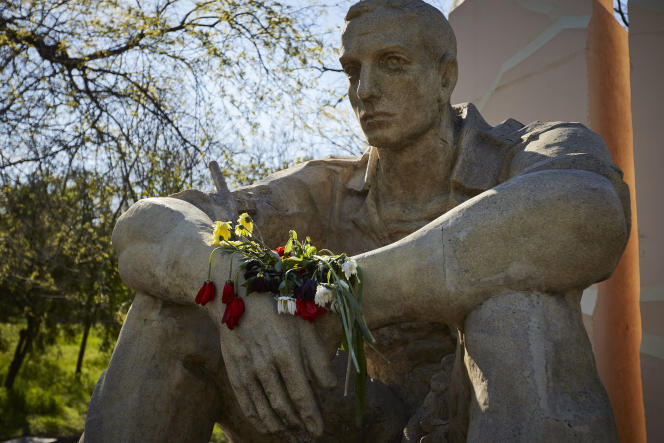IUnesco decided in January to classify the historic center of Odessa as a World Heritage Site. Its general manager, Audrey Azoulay, even went there in April to mark the determination of its organization. A plaque commemorates such a commitment in front of the Archaeological Museum of Odessa, not far from the two famous sites of the city which are the National Academic Theater of Opera and Ballet and the Potemkin Stairs. The UN organization has moreover “strongly condemned” the Russian bombings of recent days on the center of Odessa.
The museums have stored their collections safely, and those that are not closed are content with temporary exhibitions (the Museum of Western and Eastern Arts thus presents “Vintage”, a selection of French posters dating from the period 1960-1980). The Duke of Richelieu, who was the first governor of Odessa, from 1803 to 1814, before becoming President of the Council under the second Restoration in France, has his statue protected by sandbags. But it is enough to move away towards the ledge overlooking the Black Sea so that the statues are no longer protected. One of them is the 200 soldiers from Odessa who fell from 1979 to 1989 during the Soviet occupation of Afghanistan.
The last war of the USSR
This “Monument to Comrade Soldiers Who Died in the War in Afghanistan” is a giant statue of a devastated fighter, his back hunched, the Kalashnikov resting on the ground, the barrel facing him. On its left, the dates “1979-1989”. The Red Army had, at the very end of 1979, invaded Afghanistan where the “Democratic Republic” set up by Moscow in Kabul was in the process of collapsing due to the rifts between local Communists. But the Soviet invasion caused the multiplication of centers of Islamist insurrection, repressed with unprecedented violence and far from the gaze of the world.
Out of fifteen million Afghans, three million took refuge in Pakistan and two others in Iran. None of the tragedies that this unfortunate country has experienced since can be compared to the devastation of these ten years of occupation. Civilians died in the hundreds of thousands, compared to the 15,000 Soviet soldiers and 90,000 Afghan fighters killed on all sides. However, the Kremlin had to recognize its defeat, with the withdrawal of the last Red Army soldier on February 15, 1989.
February 15 commemorates since then, in independent Ukraine, the veterans of Afghanistan. They are 150,000 Ukrainians to have fought there, for more than three thousand killed. These “Afghans” (afhantsi-s), as they are colloquially known, are organized into a national union, with hundreds of local branches. They have long claimed to convey ” the torch of heroism of the generation of “Great Patriotic War” to that of independence. But a new discourse is gradually emerging, denouncing a war imposed by “Russian imperialism”against a background of exaltation of “comradeship from the front”opposed to the corruption of the civil and military leaders of the USSR.
You have 39.64% of this article left to read. The following is for subscribers only.
